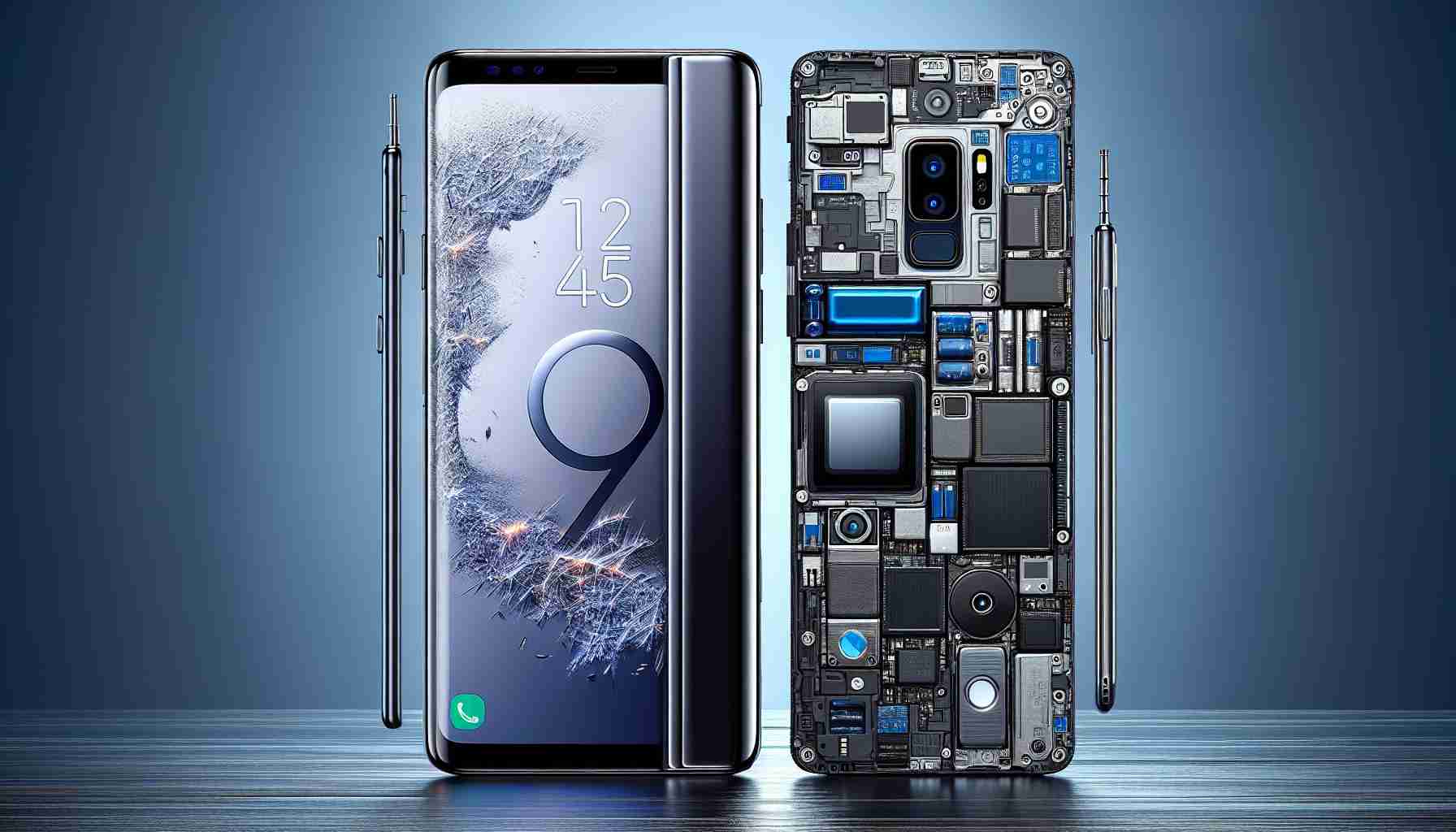A Glimpse into the Rivalry Between Legacy and Emerging Tech Champions
The smartphone arena witnesses a constant duel between established and emerging devices, one such being the reputable Samsung Galaxy S9 against the ambitious newcomer, the itel RS4. The Galaxy S9, with its trailblazing technology, flaunts a broader spectrum of network technologies such as GSM, CDMA, HSPA, EVDO, and LTE—evidence of its flexibility and global connectivity. The itel RS4, although more limited, does not lag far behind, supporting GSM, HSPA, and LTE.
In a realm where time is technology, the Galaxy S9, aging yet dignified, was initially unveiled to the market back in February 2018. Its rival, the itel RS4, proudly stepped into the spotlight in April 2024, showcasing fresher innovation. The framing of both devices speaks volumes of their design ethos: the Galaxy S9 is meticulously crafted with slim and lightweight contours, whereas the itel RS4 boasts a slightly bulkier build.
Visual Splendor and Speed Under the Hood
Display and performance often dictate the battleground for supremacy. Samsung opts for a luscious Super AMOLED display with HDR10 compatibility, a testament to its dedication to immersive visual experiences. Contrastingly, the itel RS4 delivers a larger IPS LCD that refreshes at an impressive 120Hz rate, catering to those who prioritize fluidity over resolution.
The Galaxy S9 derives its power from high-end chipsets tailored for different regions, promising formidable processing capabilities. The itel RS4 is not to be underestimated, harnessing the Mediatek Helio G99 Ultimate chipset for a robust performance that could potentially rival its adversary.
Memory, Camera, and Power: The Inward Comparison
While the Galaxy S9 offers an array of storage configurations, it is the itel RS4 that may captivate multitaskers with its generous RAM capacity, ready to handle an array of applications simultaneously. As for photography prowess, the Galaxy S9’s 12 MP shooter is enriched with sophisticated features aimed at captivating clarity, but the itel RS4’s 50 MP main sensor awaits further scrutiny to reveal its full potential.
Battery life remains a crucial facet as the itel RS4 outshines with a more capacious battery, albeit with modest fast-charging support when compared to the Galaxy S9’s wireless charging convenience.
In essence, the Galaxy S9 embodies a seasoned yet still competent offering, while the itel RS4 challenges the status quo with its high refresh rate display and consummate battery size, aiming to capture those who value the latest specs on a budget. The decision between these devices ultimately rests on personal preference in terms of legacy versus novelty.
Important Questions and Answers:
1. What are the main differences in display technology between the Samsung Galaxy S9 and the itel RS4?
– The Samsung Galaxy S9 utilizes a Super AMOLED display with HDR10 compatibility, which is known for vibrant colors and deep blacks. The itel RS4, on the other hand, uses an IPS LCD, which generally offers good color reproduction and wider viewing angles but may not match the contrast levels of AMOLED. Additionally, the itel RS4 has a higher refresh rate at 120Hz, which makes for smoother transitions and is better for gaming.
2. How do the processors of the Samsung Galaxy S9 and itel RS4 compare in performance?
– The Galaxy S9 is equipped with high-end chipsets, usually Exynos or Snapdragon variants depending on the region, aimed at delivering top-tier performance at the time of its release. The itel RS4 features a Mediatek Helio G99 Ultimate chipset, which is a mid-range processor that offers good performance for everyday tasks and gaming. However, the Galaxy S9’s chipset might still outperform the itel RS4’s in some tasks despite being older.
Key Challenges or Controversies:
– Specs versus Real-World Performance: While technical specifications provide an idea of the performance, they do not always translate to real-world usage. For example, the itel RS4’s 50 MP camera may seem superior to the Galaxy S9’s 12 MP camera, but the quality of photos depends on various factors such as sensor quality, image processing, and software optimization.
– Battery Life and Charging: The itel RS4 has a larger battery capacity, which is an advantage, but it comes with modest fast-charging support. Conversely, the Galaxy S9 may have a smaller battery but offers wireless charging, a feature appreciated for its convenience.
Advantages and Disadvantages:
Advantages of Samsung Galaxy S9:
– High-quality Super AMOLED display with HDR10.
– Premium build quality and a more compact design.
– Possibly better image quality with sophisticated camera features.
– Wireless charging capability.
Disadvantages of Samsung Galaxy S9:
– Older chipset that may not keep up with newer applications and games.
– Lower battery capacity compared to the itel RS4.
Advantages of itel RS4:
– A more modern device with potentially better longevity in software support.
– High refresh rate display for smooth visual experiences.
– Larger battery size for extended usage.
– Generous RAM capacity for multitasking.
Disadvantages of itel RS4:
– IPS LCD display may not match the contrast of the Galaxy S9’s AMOLED screen.
– Modest fast-charging compared to some competitors.
– Camera performance is unknown and requires real-world testing to evaluate.
For further information about Samsung’s products and history, visit Samsung.
For more information regarding itel and its array of products, go to itel Mobile.
The source of the article is from the blog karacasanime.com.ve
